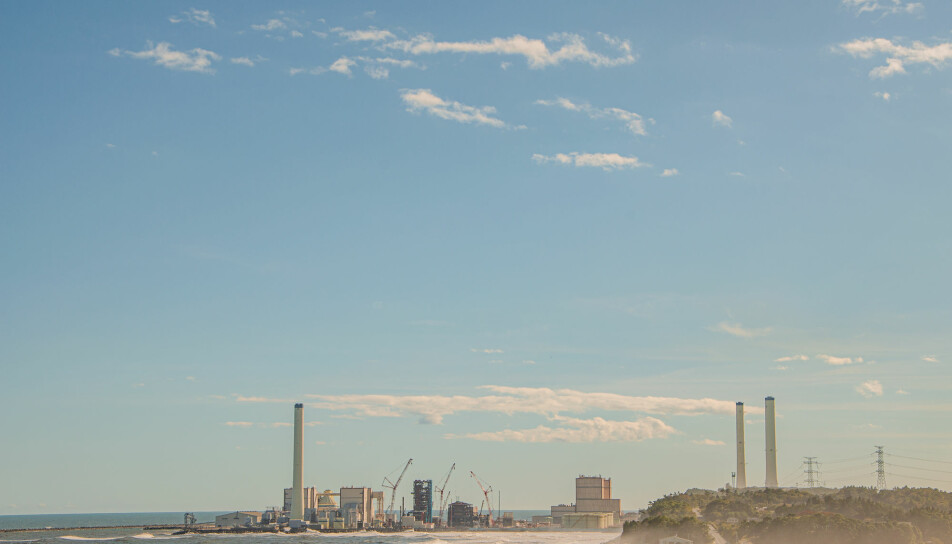
Is it possible to live a climate-friendly life?
Seen in a global context, Norwegian emissions are small. Is there any point in expensive, demanding measures? Researcher Torvald Tangeland responds.
In mid-August, the Norwegian Broadcasting Corporation arranged a debate among the leaders of several political parties, during which climate was one of the big issues.
Sylvi Listhaug, head of the Progress Party, was critical of her opponents' plans for CO2 cuts to the Norwegian oil industry.
“When these politicians speak, it sounds like we have our very own atmosphere in Norway. But we don’t. It sounds as if we are going to save the whole world by undertaking symbolic climate measures in Norway,” Listhaug said.
The huge emissions from countries such as China and India are often used to support arguments that there is no point in cutting Norwegian emissions.
CO2 cuts cost a lot of money. And these cuts will require a major shakeup for many of us.
Is there any point for Norwegians to make cuts?
Earlier this year, researchers estimated that China's CO2 emissions in 2019 accounted for 27 per cent of total global emissions. The BBC wrote about this report.
The corresponding estimate for Norway in 2017 was 0.12 per cent, according to the Norwegian website faktisk.no.
And earlier in August, forskning.no wrote that just five per cent of the world's coal power plants account for 73 per cent of emissions.
Is there any point at all in investing in expensive cuts when Norwegian emissions are so small?
“We import very large amounts of emissions that these numbers don’t account for,” says Torvald Tangeland, head of research at the Consumer Research Institute SIFO at Oslo Metropolitan University.
The new sweater you buy from China won’t affect the number for Norwegian emissions. It will actually be entered in China's climate accounts.
And because Norwegians are good at consuming, Tangeland thinks these unaccounted-for numbers are large.
“The growth in prosperity in Europe is going up and emissions are going down. But that’s a lot because CO2 emissions take place elsewhere. The connection isn’t real,” he said.
“You could say that China has to reduce its emissions, but they are producing emissions because we consume their goods,” Tangeland says.

Is it possible to live in a climate-neutral way?
We ask him what measures are most important to begin with if a person wants to start living a climate-neutral or climate-friendly life starting now. But which term should we use? Is it possible to live in a climate-neutral way?
“Neutral is a difficult concept, but some forms of consumption are more damaging to the climate than others. Consumption has become somewhat less climate-friendly as part of the overall growth in prosperity,” he says.
“We as consumers have become very good at buying new things,” he said.
Tangeland says that the relative cost of buying new versus repairing what we have has dropped.
So when your dishwasher breaks down, it’s easier to buy a new one. And then it's easy to be tempted by two new years with a guarantee.
And the temptation to buy new rather than repair goods is what has led to big CO2 emissions in a consumer nation like Norway.
Beef, housing, cars and jets
Tangeland highlights beef, housing, cars and jets as the biggest factors that determine our consumption.
“In all four areas, we can make changes that reduce the climate footprint of our consumption. Adjustments in our diet, such as reducing meat in favour of plant-based food, and preferably plant-based food that is locally produced, will help reduce greenhouse gas emissions,” he said.
Our diets are characterized by tradition, routines and a learned understanding of food. But something has changed in recent decades.
“One of my former research directors at SIFO said that they used to have five potatoes and one meat patty on their plates. Now there are five meat patties and one potato,” he said.
It's about turning the clock back a bit, Tangeland said.
“The question is whether these changes will be enough to stop global warming. But it will make more of a contribution if everyone contributes a little than if people just give up and do what they’re used to doing,” he said.
Diet and transport stand out
The Klimakur 2030 (Climate Cure 2030, in Norwegian) report has been prepared by a range of Norwegian government agencies, including the Norwegian Environment Agency.
The report says that changes in consumption in two areas in particular can help reduce greenhouse gas emissions by 2030. These are diet and transport.
The report calculates that a transition from red meat to fish and plant-based diets can reduce emissions by almost three million tonnes of CO2. In addition, reductions in food waste could cut emissions by an additional 1.5 million tonnes.
In the transport sector, electrification will have the biggest effect. Biofuels will also play an important role. According to Klimakur 2030, the total potential for reduction is 11.8 million tonnes of CO2 in the transport sector.
To put this in context, Norway's total emissions in 2020 were in excess of 49 million tonnes, according to the Norwegian Environment Agency's website.

Three strategies for change
Tangeland believes that consumption can become less climate-damaging through three strategies.
The authorities can use legislation and regulations as tools to effect change. The use of these two tools can affect the perceived and real choices consumers have.
1. Product substitution: The consumer chooses products with the lowest climate impact. This means products that have the lowest possible negative impact on the environment and climate.
This could mean switching from fossil-fuel cars to electric cars.
2. Reorganize consumption: This means changing the way we consume — without the alternative being worse.
This might entail taking a bus to work instead of a private car. Or being a member of a car-sharing service rather than owning your own car.
3. Reduce our consumption level: That is, spend less. Here, consumers reduce the amount they consume so that the use of energy and raw materials decreases.
This can mean traveling less, repairing rather than buying new, or buying quality products with a long life.
Tangeland explains that the authorities are in the process of making these changes possible. That will affect both consumers’ real choices and how they experience them, he said.
We know a lot about the consequences — but what can we do?
“Research has come a long way in being able to say something about the consequences of climate change. But there are still some challenges related to how to make the transition to a more climate-friendly society. It’s demanding,” Tangeland says.
It’s easy to fall into the trap of technology optimism, according to the researcher, and believe that the electrification of cars and planes and carbon storage will solve all the problems facing the planet.
“But changes bring new challenges. Technology will play a role. The platform economy and the sharing economy combined with new technology will give us opportunities to solve our mobility challenges in a better way,” he said.
He uses cities as an example. Here, most private cars are parked for most of the time.
“Good sharing solutions can provide access to mobility and efficient resource use,” Tangeland said. “Sharing cars means that you initially need fewer cars. And that the cars that are in the city are used more.”
More car sharing
In 2015, researchers at the University of Oslo claimed that car sharing could become a more significant trend in the future.
Since then, the future has come closer. Figures from the Department of Transport Economics in 2019 showed that 200,000 Norwegians had used a car-sharing service.
People need to want the solutions that are out there to change the system, Tangeland believes. Politicians have an important role to play here.
“It’s not enough that a few idealists become vegetarians or stop driving. We need the entire population involved to bring about this change,” he said.
It's easy to think that we have to choose between two scenarios, either more extreme weather, or going back to the Stone Age.
“We have to find a place in between, and create an idea of how our society should be. Most people want to live in a city without air pollution and where they can travel efficiently,” he said.
Looser dress codes and hotter offices
Tangeland gives an example from Japan.
This change happened after the nuclear reactor in Fukushima exploded in 2011. Suddenly, Japan had a critical need to reduce energy consumption.
The Japanese summer is hot. And in an office with a dress code that calls for a suit, shirt and tie, people needed air conditioning set at 20 degrees to keep their cool.
But after the explosion at the Fukushima power plant, all nuclear power plants in Japan were shut down for routine maintenance that summer. As a result, a large percentage of the power supply in the country was shut down. That increased the risk of power outages.
So both companies and individuals were asked to cut their power consumption. For office employees, the solution was a warmer office. But then they had stop wearing their suit jackets.
“They changed the idea of what was the appropriate office attire. That meant they could raise the temperature in the office — and at the same time feel comfortable. They saved a lot of energy that had been used for cooling. And this was the result of a social change, one that didn’t affect the quality of life,” Tangeland said.

Ideally, the quality of life for large parts of the world will continue to improve, Tangeland points out. This will lead to a redistribution. The question is whether we are willing to do that, says the researcher.
“If we are not willing to make changes, it is unlikely that we can bring India and China with us. There, a large part of the population has significantly lower levels of consumption than we do, and their standard of living is a long way from what we consider acceptable,” he said.
Are we ourselves willing to do something?
Tangeland and his colleagues have asked consumers how willing they are to reduce their own consumption.
“It looks like more people than previously are acknowledging the problem and are willing to make changes,” he said.
Still, he doesn’t think everything should rest on consumers’ shoulders.
“If politicians expect the market and consumers to solve this, nothing will happen. This must happen systemically to bring about these big changes,” he said. “These changes can be perceived as unpleasant. And as long as politics is a popularity contest it will be difficult.”
“The Norwegian election this autumn is the first major opportunity to influence this at a systemic level,” Tangeland said.
Translated by: Nancy Bazilchuk
———
Read the Norwegian version of this article on forskning.no
































